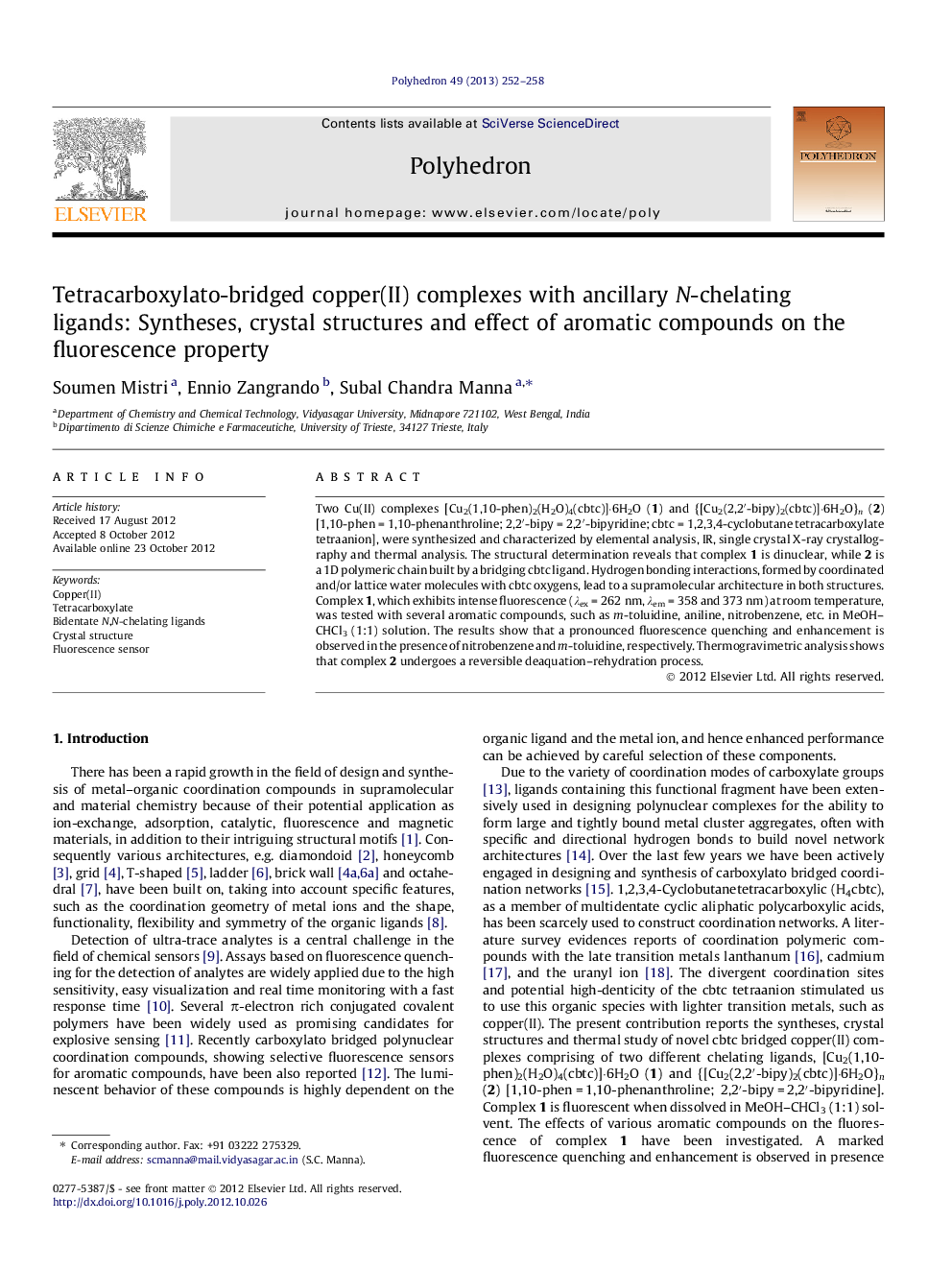| Article ID | Journal | Published Year | Pages | File Type |
|---|---|---|---|---|
| 1338613 | Polyhedron | 2013 | 7 Pages |
Two Cu(II) complexes [Cu2(1,10-phen)2(H2O)4(cbtc)]·6H2O (1) and {[Cu2(2,2′-bipy)2(cbtc)]·6H2O}n (2) [1,10-phen = 1,10-phenanthroline; 2,2′-bipy = 2,2′-bipyridine; cbtc = 1,2,3,4-cyclobutane tetracarboxylate tetraanion], were synthesized and characterized by elemental analysis, IR, single crystal X-ray crystallography and thermal analysis. The structural determination reveals that complex 1 is dinuclear, while 2 is a 1D polymeric chain built by a bridging cbtc ligand. Hydrogen bonding interactions, formed by coordinated and/or lattice water molecules with cbtc oxygens, lead to a supramolecular architecture in both structures. Complex 1, which exhibits intense fluorescence (λex = 262 nm, λem = 358 and 373 nm) at room temperature, was tested with several aromatic compounds, such as m-toluidine, aniline, nitrobenzene, etc. in MeOH–CHCl3 (1:1) solution. The results show that a pronounced fluorescence quenching and enhancement is observed in the presence of nitrobenzene and m-toluidine, respectively. Thermogravimetric analysis shows that complex 2 undergoes a reversible deaquation–rehydration process.
Graphical abstractCu(phen) and Cu(bipy) with cyclobutane tetracarboxylate led to a discrete dinuclear complex and a coordination polymer. The former species in MeOH–CHCl3 solution exhibits intense fluorescence at room temperature and was tested in the presence of several aromatic molecules. A marked fluorescence quenching and enhancement was observed with nitrobenzene and m-toluidine, respectively.Figure optionsDownload full-size imageDownload as PowerPoint slide
